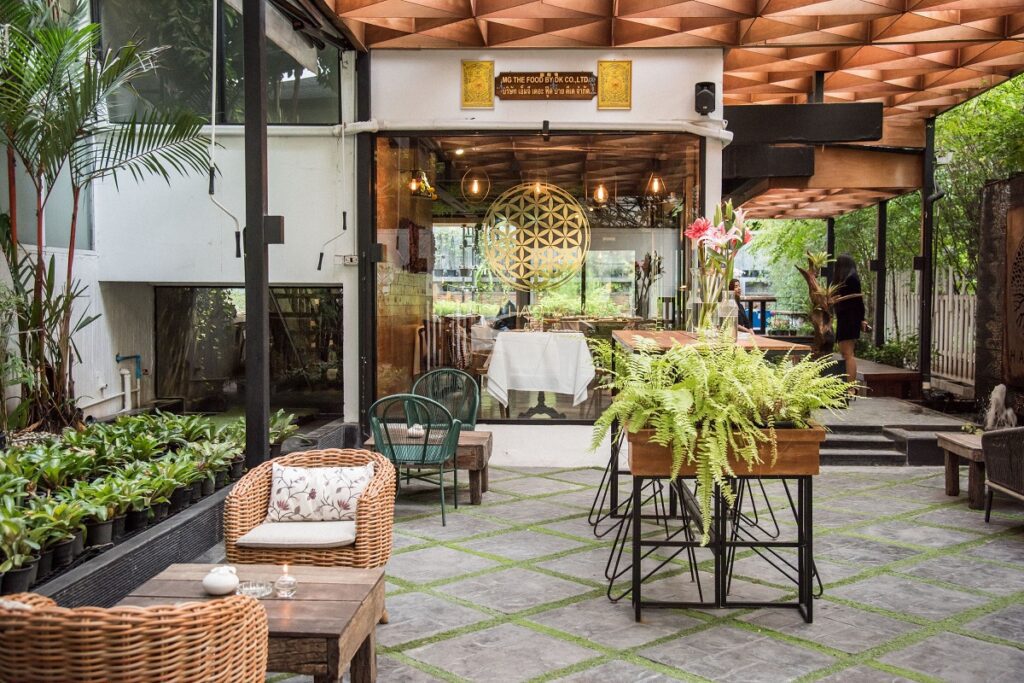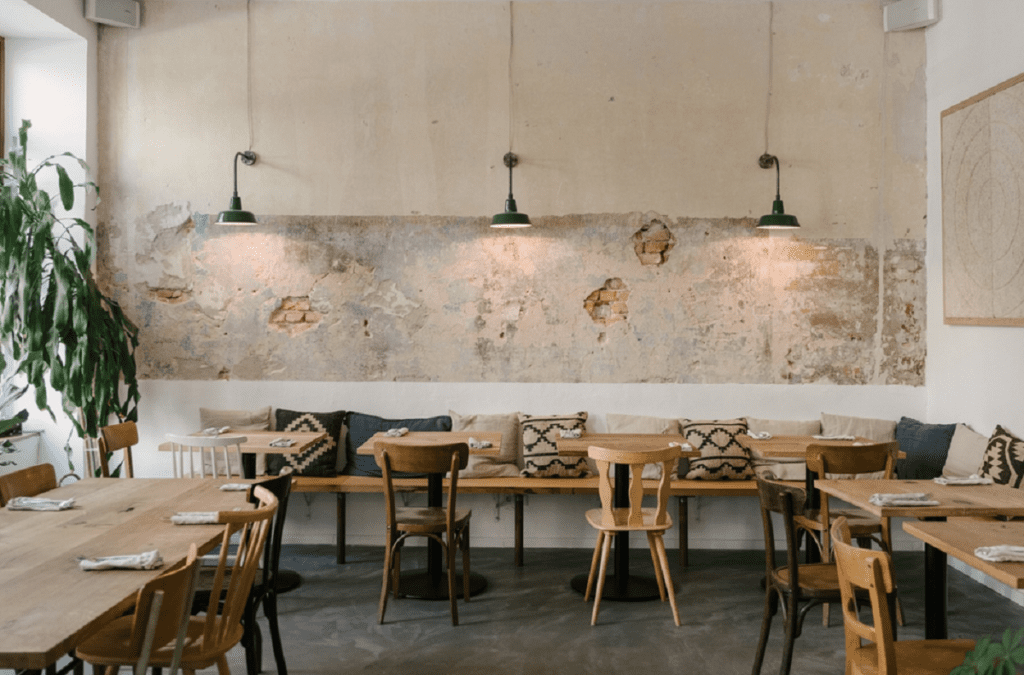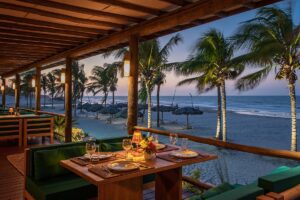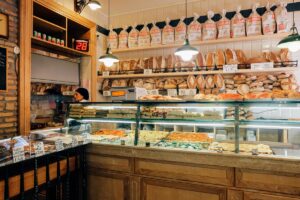Over the last few years, sustainability has been a huge talking point across various industries. In travel, it’s eco-friendly hotels and sustainable restaurants leading the charge. If you’re like most people, you’ve spent years pretending that eating kale salads offsets your carbon footprint from those spontaneous weekend flights.
Good news: there are actually places where dining out doesn’t just taste good—it does good. Welcome to the world of sustainable restaurants, where the chefs are eco-warriors, the menus are manifestos, and your fork is basically a tiny, edible protest sign. We’ve rounded up the most sustainable restaurants in the world to enable you save the world;
Please Download Our Mobile App here.
Haoma, Thailand

Touted as Thailand’s first urban farm and zero-waste restaurant, Haoma sits tucked away in the bustling heart of Bangkok. Its chic, modern-meets-rustic interiors—designed by Bangkok-based architect Hammad Mohd—sets the stage for something extraordinary. Here, the menu is a celebration of hyper-local abundance, crafted from 40 different herbs, fruits, and plants grown on-site in the restaurant’s grounds.
Sustainability isn’t just a buzzword: Haoma collects rainwater, recycles solid waste, and composts kitchen scraps. The restaurant even maintains a larger farm nearby where goats, chickens, and cows live happily, eventually starring on the ever-evolving menu. Even the wine list sticks to the mission, featuring bottles from small, ethical, organic and biodynamic growers.
Wild teas and boutique Thai coffees round out the offerings, reinforcing Haoma’s commitment to community and land. Beyond the plate, Haoma’s impact is deeply human, too. They have served over 300,000 meals to Bangkok’s homeless during the pandemic and training Burmese refugees in culinary arts to build new futures. At Haoma, dining isn’t just sustainable—it’s transformational.
Restaurant St Barts, England

St Barts in London takes you on a beautifully curated culinary journey across the British Isles, guided by the seasonal instincts of chef Johnnie Crowe. His tasting menu is a thoughtful ode to small-scale farms and passionate growers, where each course tells a story of the land and sea. But the experience at St Barts goes far beyond what’s on the plate.
The interiors are a masterpiece in their own right, drawing inspiration from Britain’s historic architecture. Natural materials such as stone, soft textiles, and wood—salvaged from fallen trees—give the space a grounded, almost sacred feel. Even the tables are handmade, each one a tactile tribute to nature’s quiet resilience.
Completing the scene is the in-house crafted tableware, with designs that echo the rugged charm of Britain’s coastline and the movement of the surrounding waters. At St Barts, every detail, from the food to the fork, whispers a love letter to Britain’s landscapes.
Iris, Norway

Dining at Restaurant Iris in Rosendal isn’t just a meal—it’s a full-blown adventure. Your experience begins with a scenic boat ride across the glittering waters of Rosendal. The boat heads for the rugged little island of Snilstveitøy, where chef Anika Madsen welcomes guests with an opening bite at her cozy boathouse.
From there, you’ll stroll along the jetty to the spectacular Salmon Eye—a floating, futuristic art installation—for a mesmerizing underwater encounter that stirs all the senses. The journey culminates at the restaurant’s dining room, where panoramic views of soaring fjords and dramatic mountain ranges set the stage for a meticulously crafted tasting menu.
Each course tells a story of Norway’s oceans, peaks, and wilderness. And if the weather is kind, you’ll savor parts of the meal atop the rooftop terrace, where dishes are flame-grilled under the open sky and served with a side of crisp mountain air. In short: at Iris, the landscapes are as much a part of dinner as the food itself.
Frea, Germany

In the bustling heart of Berlin, co-founders David J. Suchy and Jasmin Suchy have crafted a revered vegan hotspot. They’ve built a mission-driven experience rooted in regional organic farming and hands-on production. Nearly everything on the menu is made in-house, from their heavenly sourdough bread to the rich, velvety chocolate that stars in their desserts.
Sustainability isn’t just a buzzword here—it’s woven into every aspect of the operation. There’s even a composting machine that transforms all food waste into nutrient-rich soil, sent back to local farmers to complete the circle. Inside, Frea feels effortlessly cool: the space blends clean Scandinavian lines with boho-chic warmth, accented by thoughtfully sourced décor from sustainable creators like Wales’ Tŷ Syml.
Al Fresco Giardino e Bistrot, Italy

If you’re heading to Sicily, make sure to carve out time for a meal at Al Fresco Giardino e Bistrot. It’s a charming hideaway tucked inside Casa San Francesco, just steps from the majestic Cathedral of Palermo. This cozy restaurant is one of the best places in Palermo to grab a great pizza or a plate of comforting Italian fare. However, it’s also a community hub where concerts, workshops, and lively social events regularly fill the lush gardens with energy.
The restaurant is the heartfelt project of Lucia Lauro, a social worker, and Francesco Gambino, a chef. They’ve personally designed every inch of the space, infusing it with warmth and intention. Diners can sink into the intimate, amber-toned indoor rooms for a snug evening. They can also soak up the Sicilian nights outdoors, where thousands of twinkling fairy lights transform the garden into pure magic.
Once a neglected plot, the garden has been lovingly revived into a “small green oasis.” It’s now home to a library and a stash of free board games, inviting visitors to linger, connect, and feel part of something special. For social responsibility, the restaurant also offers training courses and stable work for ex-convicts from Malaspina Juvenile Detention Facility.
Conclusion
You don’t have to sacrifice flavor for principles. In fact, the most sustainable restaurants have shown the world that saving the planet can be delicious, dramatic, and occasionally involve pickled pine needles. So next time you book a table, remember: you’re not just ordering dinner. You’re voting for a future where fine dining and fine Earth stewardship go hand-in-hand, like butter and freshly baked, zero-waste bread.




